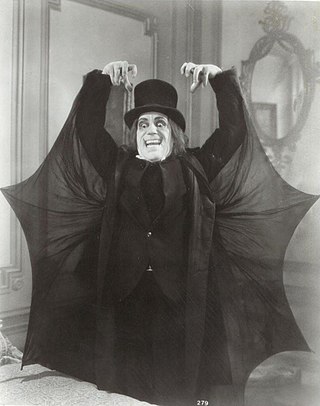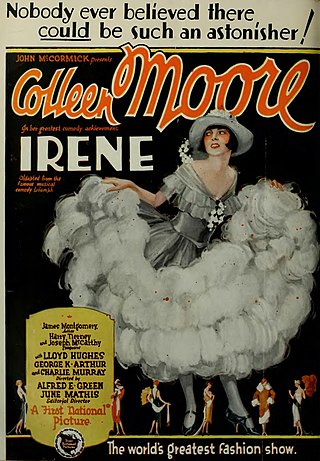Plot
This article needs a plot summary.(October 2024) |
| Madame du Barry | |
|---|---|
| Directed by | R. William Neill |
| Written by | Jack Cunningham |
| Screenplay by | Jack Cunningham |
| Produced by | Herbert T. Kalmus |
| Starring | Priscilla Dean Mahlon Hamilton |
| Cinematography | George Cave |
| Edited by | Natalie Kalmus |
Production companies | |
| Distributed by | Metro-Goldwyn-Mayer |
Release date |
|
| Country | United States |
| Languages | Silent English Intertitles |
Madame du Barry is a 1928 MGM short silent fictionalized film short in two-color Technicolor. It was the eighth film produced as part of Metro-Goldwyn-Mayer's "Great Events" series, and the last to be released before the new year.
This article needs a plot summary.(October 2024) |
The film was shot at the Tec-Art Studio in Hollywood. [2]
Madame du Barry has not survived in its original two-reel form. 800 feet of 35mm material from the second reel has been preserved by the Library of Congress in Washington, DC. [3]

Silent comedy is a style of film, related to but distinct from mime, developed to bring comedy into the medium of film during the silent film era (1900s–1920s), before synchronized soundtracks that could include dialogue were technologically available for the majority of films. While silent comedy is still practiced today, albeit much less frequently, it has significantly influenced modern comedic media.

A lost film is a feature or short film in which the original negative or copies are not known to exist in any studio archive, private collection, or public archive. Films can be wholly or partially lost for a number of reasons. Early films were not thought to have value beyond their theatrical run, so many were discarded afterward. Nitrate film used in early pictures was highly flammable and susceptible to degradation. The Library of Congress began acquiring copies of American films in 1909, but not all were kept. Due to improvements in film technology and recordkeeping, few films produced in the 1950s or beyond have been lost.

Henry William George Lupino professionally Lupino Lane, was an English actor and theatre manager, and a member of the famous Lupino family, which eventually included his niece, the screenwriter/director/actress Ida Lupino. Lane started out as a child performer, known as 'Little Nipper', and went on to appear in a wide range of theatrical, music hall and film performances. Increasingly celebrated for his silent comedy short subjects, he is best known in the United Kingdom for playing Bill Snibson in the play and film Me and My Girl, which popularized the song and dance routine "The Lambeth Walk".

Wanderer of the Wasteland is a 1924 American silent Western film directed by Irvin Willat and starring Jack Holt, Noah Beery, and Billie Dove. It was the second feature film to be photographed entirely in two-color Technicolor.

Lights of Old Broadway is a 1925 American silent drama film directed by Monta Bell, produced by William Randolph Hearst's Cosmopolitan Productions, and released by Metro-Goldwyn-Mayer. The film stars Marion Davies in a dual role and Conrad Nagel, and is an adaptation of the play The Merry Wives of Gotham by Laurence Eyre (USA). The film has color sequences using tinting, Technicolor, and the Handschiegl color process.

Irene is a 1926 American silent romantic comedy film starring Colleen Moore, and partially shot in Technicolor. The film was directed by Alfred E. Green, produced by Moore's husband John McCormick, and based on the musical Irene written by James Montgomery with music and lyrics by Harry Tierney and Joseph McCarthy.

Madame DuBarry is a 1919 German silent film on the life of Madame Du Barry. It was directed by Ernst Lubitsch, written by Norbert Falk and Hanns Kräly with the title role taken by Pola Negri and Louis XV played by Emil Jannings. Its alternative title for United States distribution was Passion.
Climbing the Golden Stairs is an American 2-reel musical fantasy short released in 1929. It was produced in 2-color Technicolor dye-transfer process.
Buffalo Bill's Last Fight is a 1927 MGM silent fictionalized film short in two-color Technicolor. It was the second short film produced as part of Metro-Goldwyn-Mayer's "Great Events" series. As with the first film in the series, The Flag: A Story Inspired by the Tradition of Betsy Ross, this film continued the series' original intent to focus on events from American history. Ultimately, only one other short was shot which stuck to this format; the other films in the series featured historical events with a European or Asian focus.
The Lady of Victories is a 1928 MGM silent fictionalized film short in two-color Technicolor. It was the third short film produced as part of Metro-Goldwyn-Mayer's "Great Events" series.
The Czarina's Secret is a 1928 MGM silent fictionalized film short in two-color Technicolor. It was the fourth film produced as part of Metro-Goldwyn-Mayer's "Great Events" series.
The Virgin Queen is a 1928 MGM silent fictionalized film short in two-color Technicolor. It was the third short film produced as part of Metro-Goldwyn-Mayer's "Great Events" series.
Cleopatra is a 1928 MGM silent fictionalized film, shot in two-color Technicolor. It was the sixth short produced as part of Metro-Goldwyn-Mayer's "Great Events" series.
The Heart of General Robert E. Lee is a 1928 MGM short silent fictionalized film short in two-color Technicolor. It was the seventh film produced as part of Metro-Goldwyn-Mayer's "Great Events" series.
Manchu Love is a 1929 American pre-code Hollywood Metro-Goldwyn-Mayer short silent historical fiction film short in two-color Technicolor. The film features a cast entirely of people of Asian descent and stars Sojin as Su Shun and Etta Lee as Empress Tzu Hsi. It was the ninth film produced as part of Metro-Goldwyn-Mayer's "Great Events" series.
Light of India is a 1929 MGM short silent film short in two-color Technicolor. It was the tenth film produced as part of Metro-Goldwyn-Mayer's "Great Events" series.
A Princess of Destiny is a 1929 MGM short silent film short in two-color Technicolor. It was the eleventh and penultimate film produced as part of Metro-Goldwyn-Mayer's "Great Events" series.
Frontier Romance is a 1929 MGM short silent film short in two-color Technicolor. It was the twelfth and final film produced as part of Metro-Goldwyn-Mayer's "Great Events" series. A romantic historical drama, the film depicts George Rogers Clark and other American colonists as they interact with Native American tribespeople.